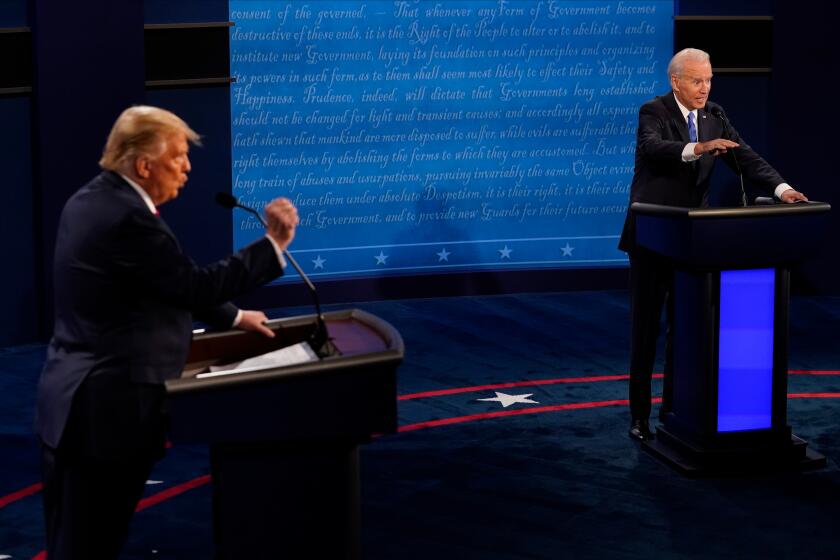Opinion: In defense of electing judges
Just as surely as election season comes regularly in California, once again the public is debating the appropriateness of electing our judges, as evidenced by Jessica A. Levinson’s May 9 Op-Ed article in The Times, “Why voters shouldn’t be electing judges.” Critics such as Levinson advocate for eliminating judicial elections and instead having the governor or some special type of committee appoint all judges.
As a judge in the L.A. County Superior Court, I would like to present a different viewpoint: California’s judicial election system not only works, but in some ways it is preferable to an appointment-only process.
The biggest issue is transparency. Judicial elections are inherently transparent to the public, while the appointment process is not; in fact, by law the formal vetting process performed by the Commission on Judicial Nominees Evaluation (JNE) is cloaked in secrecy. The JNE holds any information on a nominee that it receives in the strictest confidence, and its rating for applicants (exceptionally well qualified, well qualified, qualified or not qualified) is not generally released to the public unless the governor appoints a person rated as not qualified, which is rare.
Don’t get me wrong: I do not believe that many of my appointed colleagues are unqualified. To the contrary, I believe the vast majority of appointed judges are honest, fair and dedicated to serving the public. Of course, as in any profession, there are judges who leave something to be desired, and elections serve as a check.
The Los Angeles Superior Court, the largest trial court in the country, has more than 450 judges. Since judicial elections began in our county in 1879, there have been perhaps only 100 judges who first gained their Superior Court seats via election -- none of whom were removed from office by either the California Supreme Court or by the Commission on Judicial Performance.
On the other hand, some judges have been “removed” by voters. Since the CJP in 1995 was given the power to directly remove judges for misconduct, only one judge who was initially elected to the Superior Court in any of California’s 58 counties has been removed, while the other nine judges who were removed were initially appointed. This appears to be consistent with the fact that roughly 10% of our state’s current judges were initially elected to the bench.
Critics of judicial elections often say elected judges may fear handing down “unpopular” decisions that upset the voters. Although I cannot read the minds of my colleagues and say whether they fear the public, I can attest to the fact that Superior Court judges in L.A. County enjoy some of the best job security around. Only one of the 151 county judges on the June ballot faces a challenger, a proportion in line with the historical average. Moreover, since 1980 there have been only two successful challenges to a sitting L.A. County Superior Court judge, most recently in 2006. These defeats were simple aberrations, and I am confident that my colleagues do not fear the electoral ramification of making an “unpopular” decision.
Finally, it’s often said voters are ignorant of the qualifications of the judicial candidates and simply cannot be trusted to make such an important decision. Fine, but why single out judges? A Gallup poll last year found that two-thirds of voters cannot name their representative in Congress. Should we therefore fill these offices by appointment only?
That said, the information is there for the easy pickings. Most, if not all candidates, have their own websites. The League of Women Voters of Los Angeles has detailed information on each candidate, and newspapers such as The Times and the Metropolitan News-Enterprise interview the candidates and make endorsements based on their investigations. Most important, the Los Angeles County Bar Assn. formally and publicly rates each candidate, similar to the work done in secret by the state JNE. I am aware of no other elected position for which the candidates are subject to such objective scrutiny by a jury of their peers, so to speak.
As with any voting system, the process we use to elect and retain judges has its imperfections -- but it works. We generally elect judges who are qualified for the job, and rarely we don’t. It’s called democracy, and we need more public participation, not less.
Randolph M. Hammock was elected as a Los Angeles County Superior Court judge in 2010.
More to Read
A cure for the common opinion
Get thought-provoking perspectives with our weekly newsletter.
You may occasionally receive promotional content from the Los Angeles Times.






